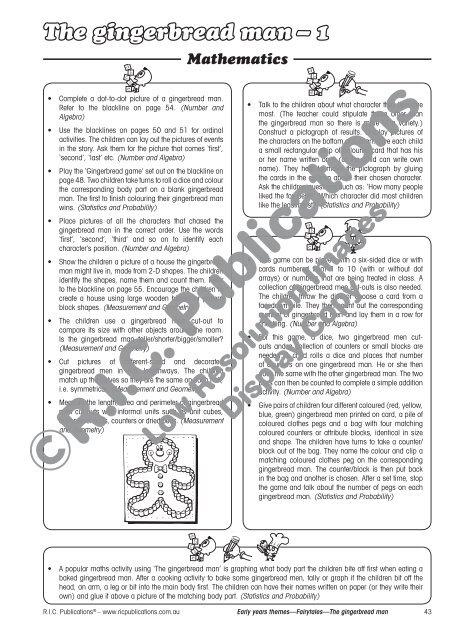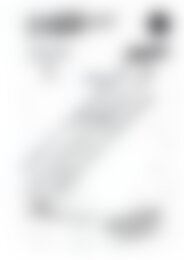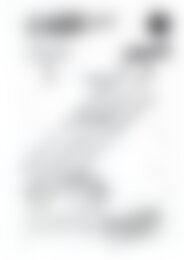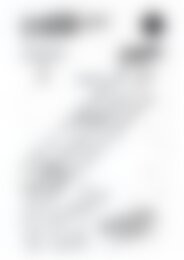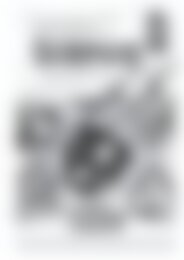RIC-20937 Early years Fairytales - Gingerbread Man
You also want an ePaper? Increase the reach of your titles
YUMPU automatically turns print PDFs into web optimized ePapers that Google loves.
The gingerbread man – 1<br />
Mathematics<br />
• Complete a dot-to-dot picture of a gingerbread man.<br />
Refer to the blackline on page 54. (Number and<br />
Algebra)<br />
• Use the blacklines on pages 50 and 51 for ordinal<br />
activities. The children can lay out the pictures of events<br />
in the story. Ask them for the picture that comes ‘first’,<br />
‘second’, ‘last’ etc. (Number and Algebra)<br />
• Play the ‘<strong>Gingerbread</strong> game’ set out on the blackline on<br />
page 48. Two children take turns to roll a dice and colour<br />
the corresponding body part on a blank gingerbread<br />
man. The first to finish colouring their gingerbread man<br />
wins. (Statistics and Probability)<br />
• Place pictures of all the characters that chased the<br />
gingerbread man in the correct order. Use the words<br />
‘first’, ‘second’, ‘third’ and so on to identify each<br />
character’s position. (Number and Algebra)<br />
• Show the children a picture of a house the gingerbread<br />
man might live in, made from 2-D shapes. The children<br />
identify the shapes, name them and count them. Refer<br />
to the blackline on page 55. Encourage the children to<br />
create a house using large wooden blocks or pattern<br />
block shapes. (Measurement and Geometry)<br />
• The children use a gingerbread man cut-out to<br />
compare its size with other objects around the room.<br />
Is the gingerbread man taller/shorter/bigger/smaller?<br />
(Measurement and Geometry)<br />
• Cut pictures of different-sized and decorated<br />
gingerbread men in half lengthways. The children<br />
match up the halves so they are the same on each half;<br />
i.e. symmetrical. (Measurement and Geometry)<br />
• Measure the length, area and perimeter of gingerbread<br />
men cut-outs with informal units such as unit cubes,<br />
cottonwool balls, counters or dried peas. (Measurement<br />
and Geometry)<br />
• Talk to the children about what character they liked the<br />
most. (The teacher could stipulate those other than<br />
the gingerbread man so there is more of a variety.)<br />
Construct a pictograph of results. Display pictures of<br />
the characters on the bottom of a chart. Give each child<br />
a small rectangular strip of coloured card that has his<br />
or her name written on it (or the child can write own<br />
name). They help to make the pictograph by gluing<br />
the cards in the column above their chosen character.<br />
Ask the children questions such as: ‘How many people<br />
liked the fox best?’ ‘Which character did most children<br />
like the least/most?’ (Statistics and Probability)<br />
• This game can be played with a six-sided dice or with<br />
cards numbered from 1 to 10 (with or without dot<br />
arrays) or numbers that are being treated in class. A<br />
collection of gingerbread men cut-outs is also needed.<br />
The children throw the dice or choose a card from a<br />
facedown pile. They then count out the corresponding<br />
number of gingerbread men and lay them in a row for<br />
checking. (Number and Algebra)<br />
• For this game, a dice, two gingerbread men cutouts<br />
and a collection of counters or small blocks are<br />
needed. A child rolls a dice and places that number<br />
of counters on one gingerbread man. He or she then<br />
does the same with the other gingerbread man. The two<br />
piles can then be counted to complete a simple addition<br />
activity. (Number and Algebra)<br />
• Give pairs of children four different coloured (red, yellow,<br />
blue, green) gingerbread men printed on card, a pile of<br />
coloured clothes pegs and a bag with four matching<br />
coloured counters or attribute blocks, identical in size<br />
and shape. The children have turns to take a counter/<br />
block out of the bag. They name the colour and clip a<br />
matching coloured clothes peg on the corresponding<br />
gingerbread man. The counter/block is then put back<br />
in the bag and another is chosen. After a set time, stop<br />
the game and talk about the number of pegs on each<br />
gingerbread man. (Statistics and Probability)<br />
• A popular maths activity using ‘The gingerbread man’ is graphing what body part the children bite off first when eating a<br />
baked gingerbread man. After a cooking activity to bake some gingerbread men, tally or graph if the children bit off the<br />
head, an arm, a leg or bit into the main body first. The children can have their names written on paper (or they write their<br />
own) and glue it above a picture of the matching body part. (Statistics and Probability)<br />
R.I.C. Publications ® – www.ricpublications.com.au <strong>Early</strong> <strong>years</strong> themes—<strong>Fairytales</strong>—The gingerbread man 43


